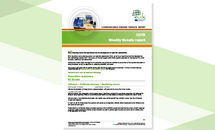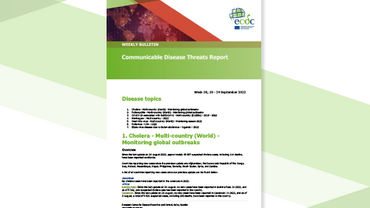Communicable disease threats report, 7-13 February 2016, week 6
The ECDC Communicable Disease Threats Report (CDTR) is a weekly bulletin for epidemiologists and health professionals on active public health threats. This issue covers the period 7-13 February 2016 and includes updates on Zika virus, Ebola virus disease and seasonal influenza.
Executive summary
This issue covers the period from 7 to 13 February 2016 and includes updates on seasonal influenza and Zika virus infection outbreaks.
Seasonal influenza
Influenza transmission in Europe shows a clear seasonal pattern, with peak activity during winter months.
Influenza A(H1N1)pdm09 viruses predominated, accounting for 87% of subtyped sentinel surveillance detections of influenza virus. An increase in cases of severe disease, mainly in people aged 15–64 years, was seen again this week, with most of them associated with A(H1N1)pdm09.
During week 5, 25 of the 50 Member States and regions that reported epidemiological data from surveillance for influenza-like illness and acute respiratory infection indicated increasing rates. In the past week, countries also reported increasing numbers of cases of severe acute respiratory infection (SARI), as well as a high percentage of influenza-positive specimens. Thirthy-eight countries reported influenza virus detections in specimens from sentinel sources, indicating increased influenza activity in the WHO European Region as a whole. Belarus, Greece and Ireland indicated high-intensity influenza activity; Finland, the Russian Federation and Ukraine reported very high activity, as in the previous week.
ECDC monitors influenza activity in Europe during the winter season and publishes its report weekly on the Flu News Europe website.
Zika - monitoring global outbreaks
Since last week, no new additional countries or territories have reported laboratory-confirmed autochthonous transmission. As of 12 February 2016, 36 countries or territories have reported autochthonous cases of Zika virus infection in the past nine months.
A case of congenital CNS malformation and microcephaly caused by transplacental Zika virus infections was reported by Slovenian scientists in The New England Journal of Medicine (NEJM) on 10 February 2016. ECDC has published a scientific advance in reaction to this article.
ECDC published an epidemiological update on Zika on 12 February 2016 and a dedicated Zika outbreak page in its website.
Download






